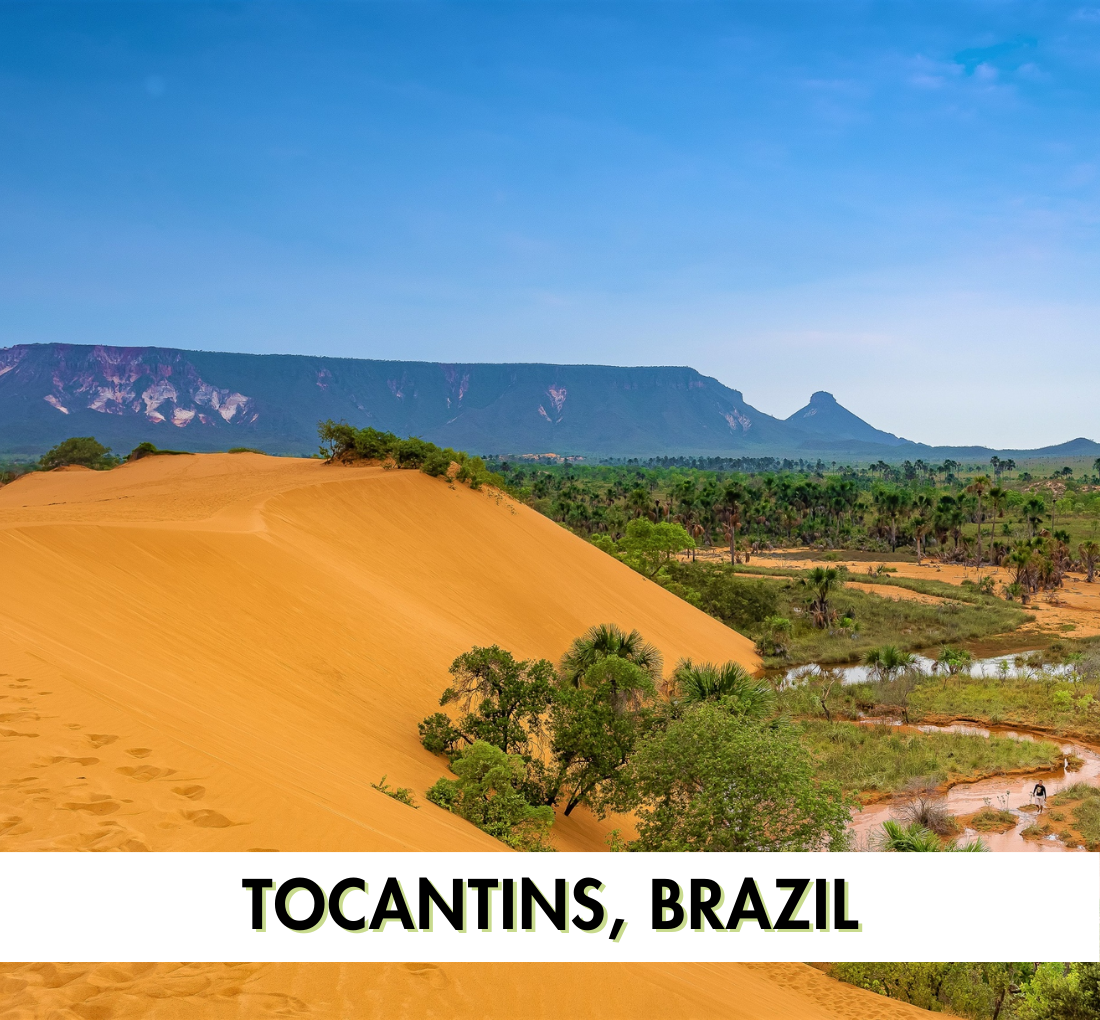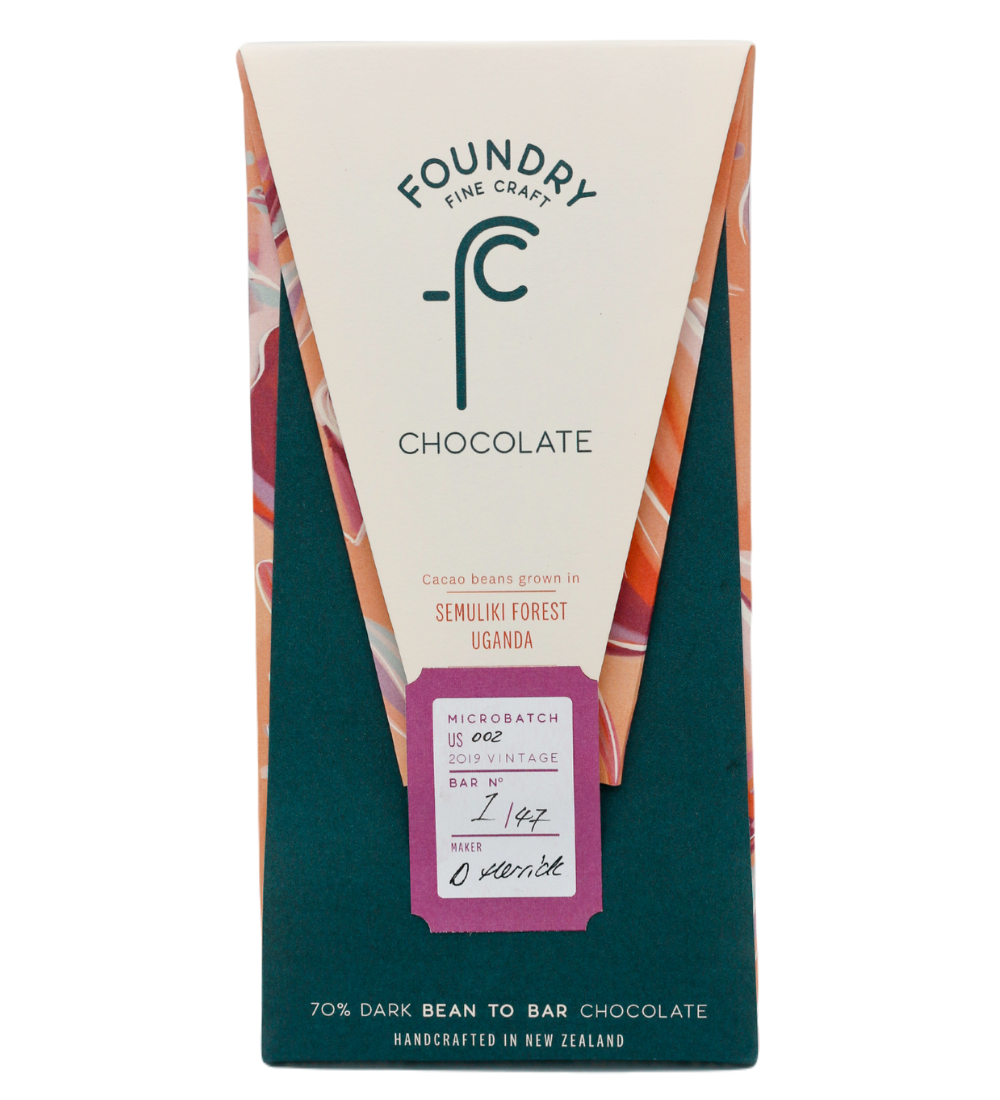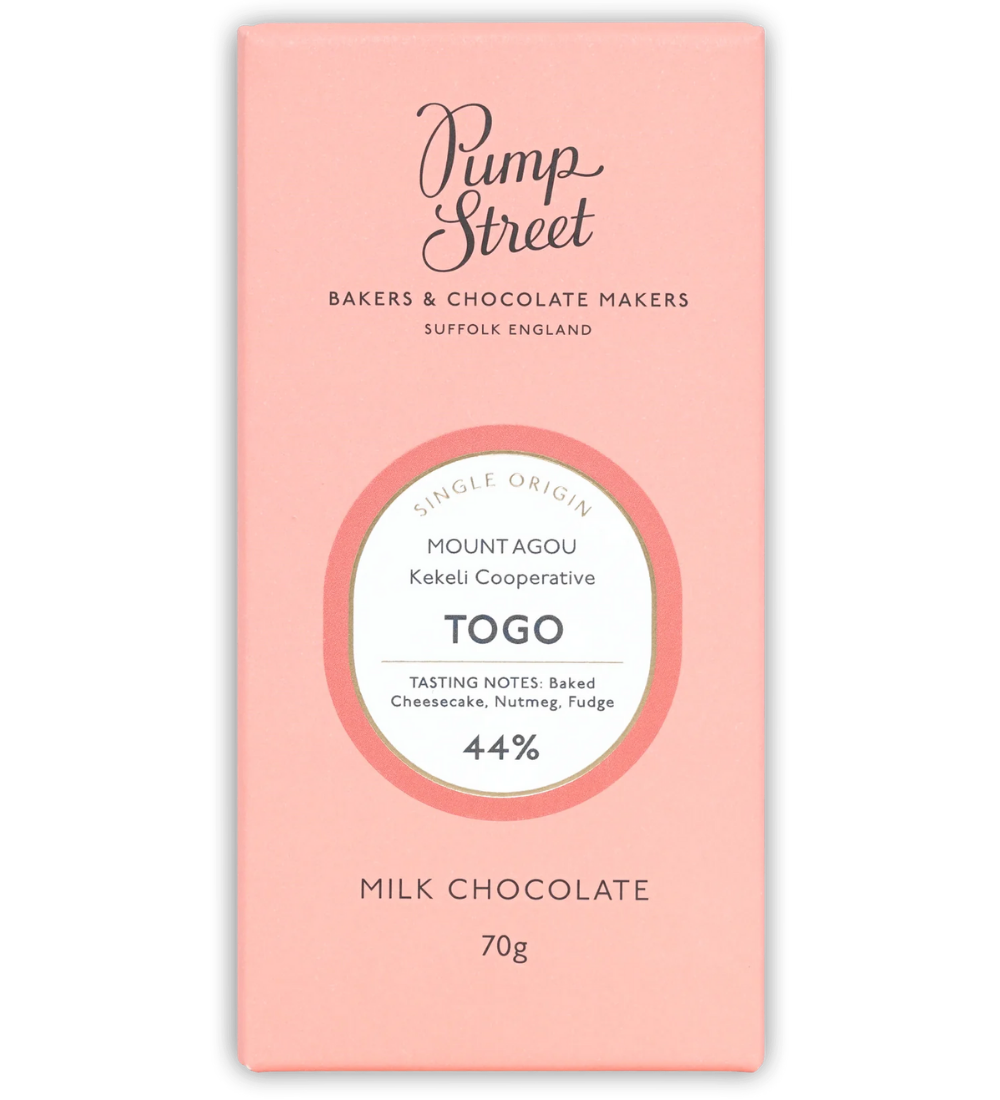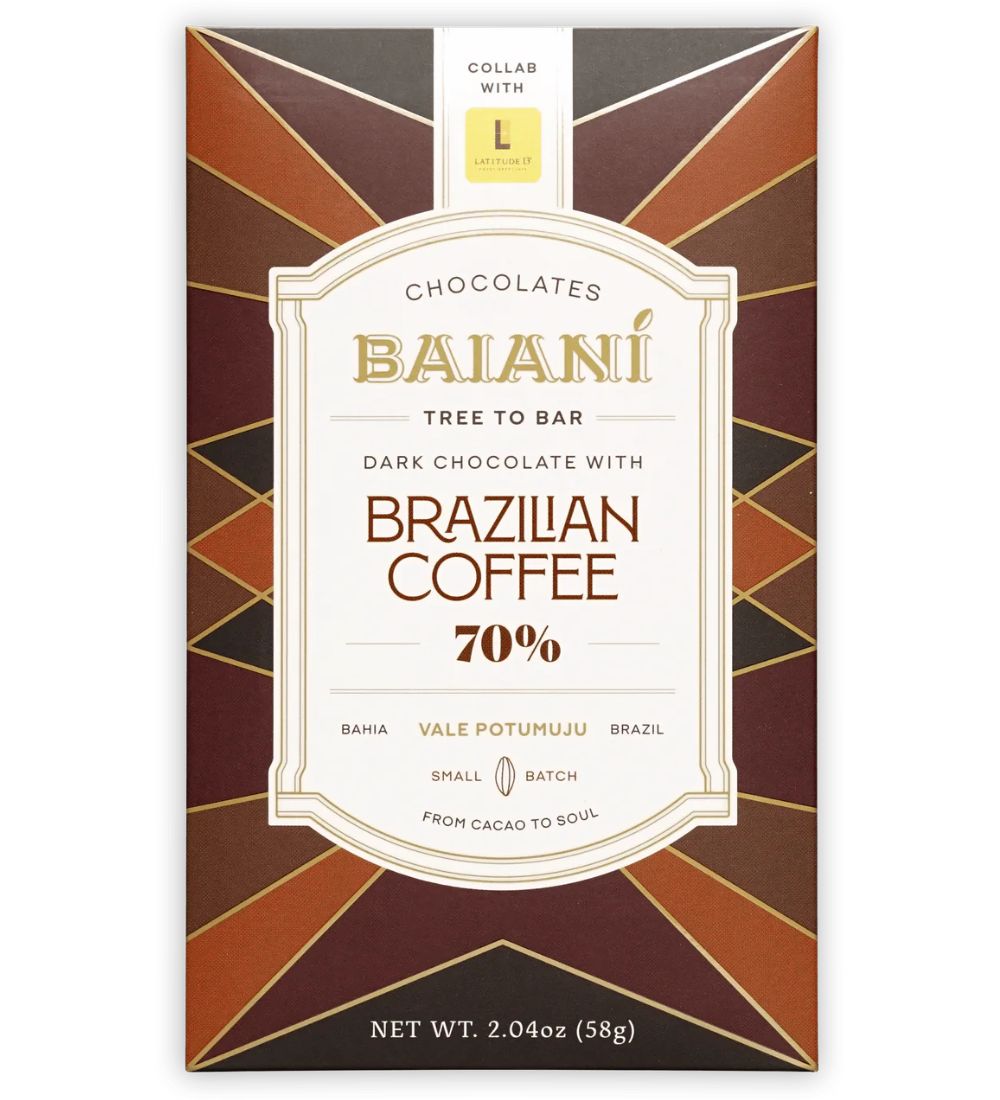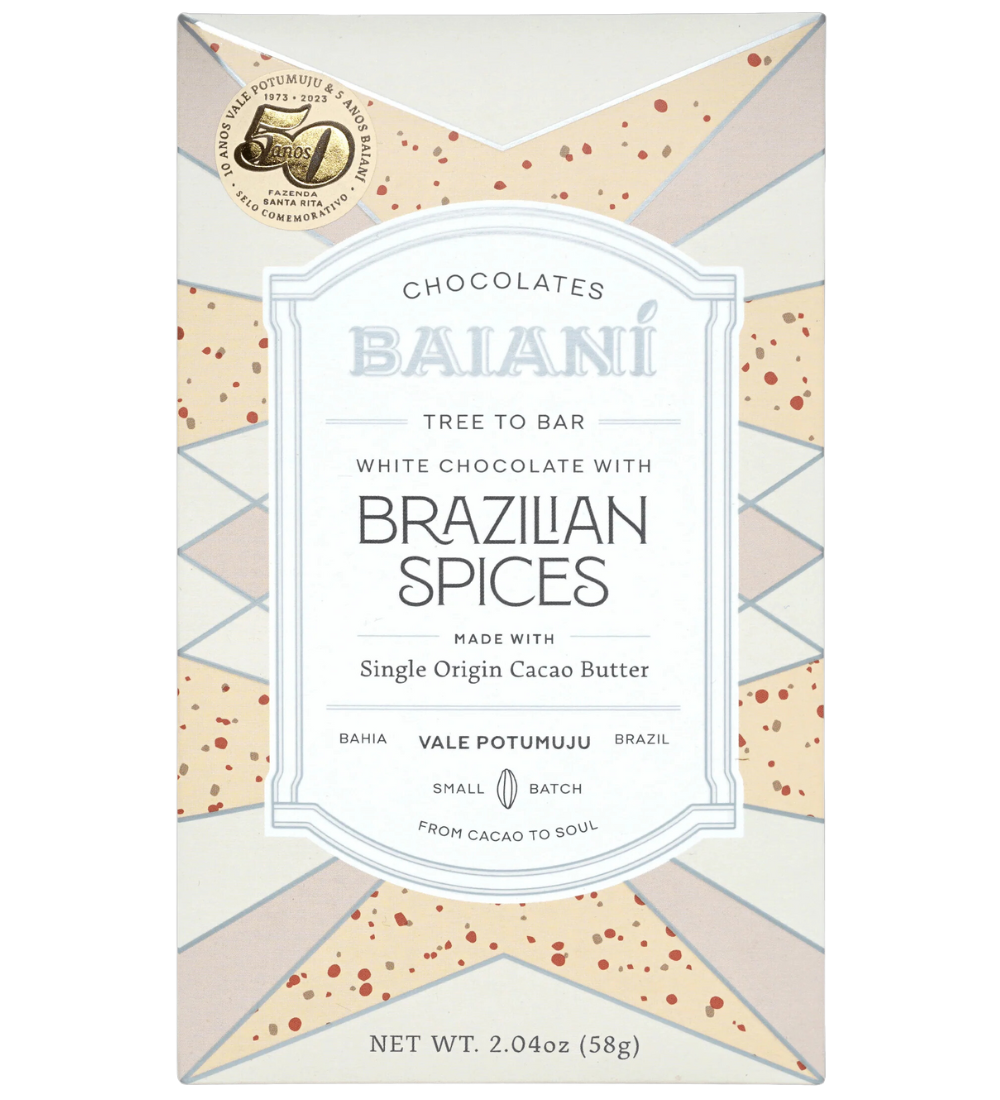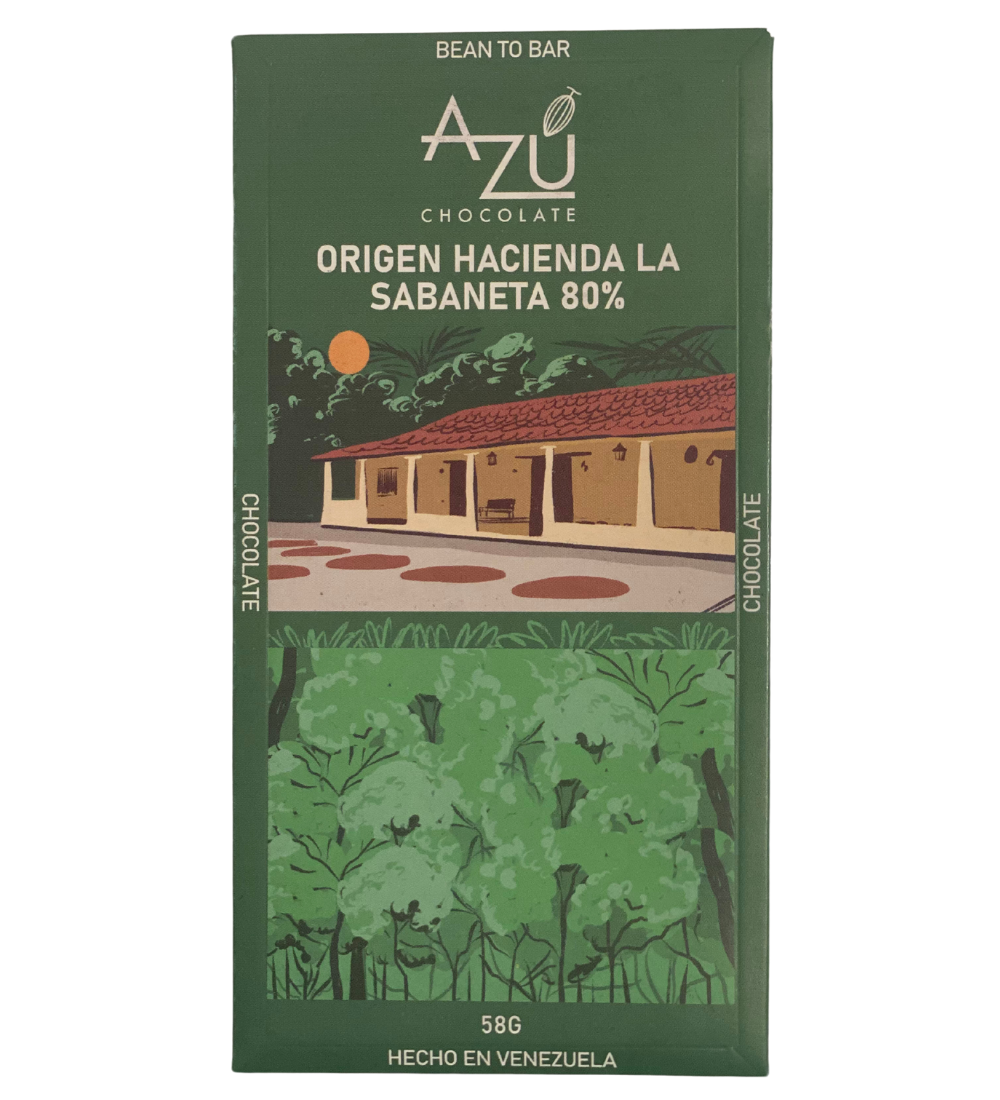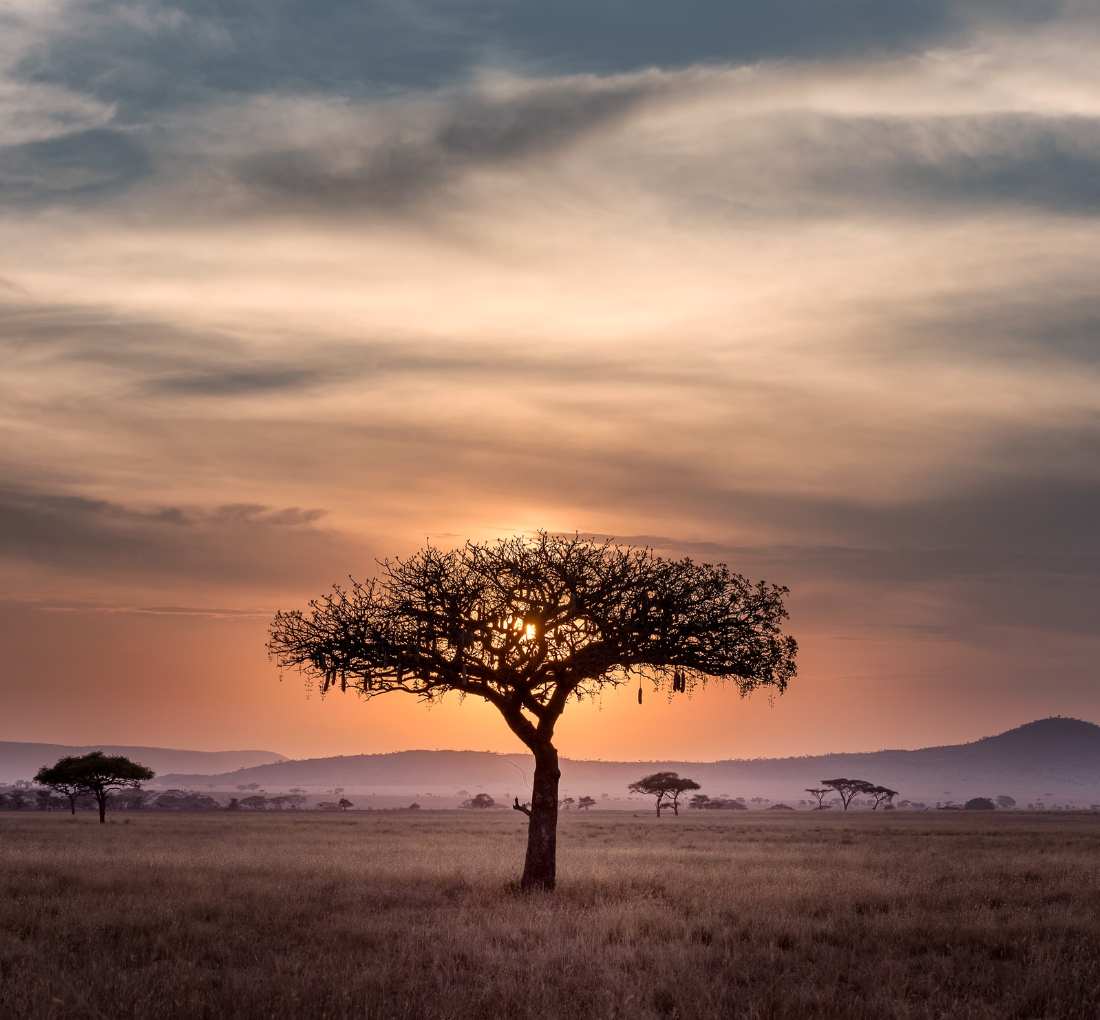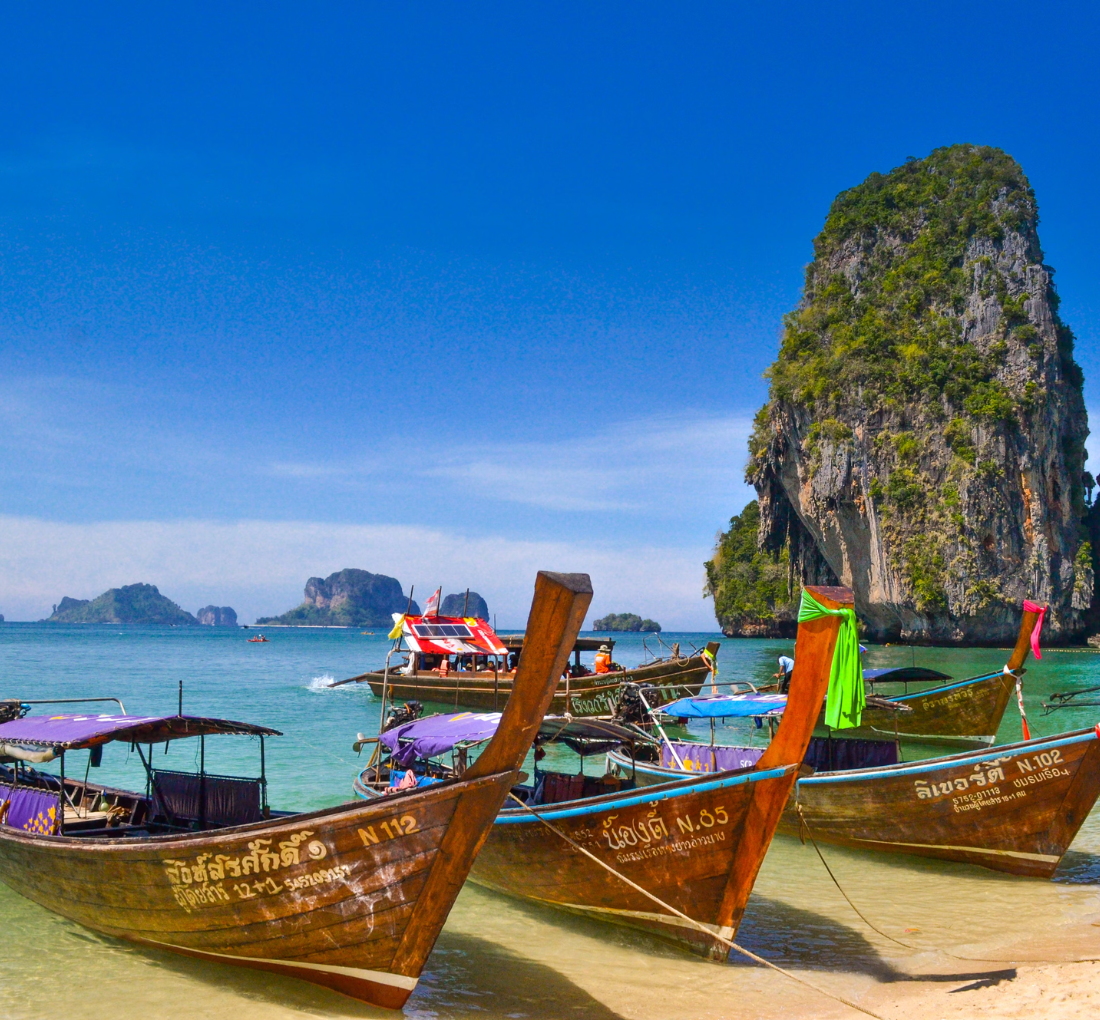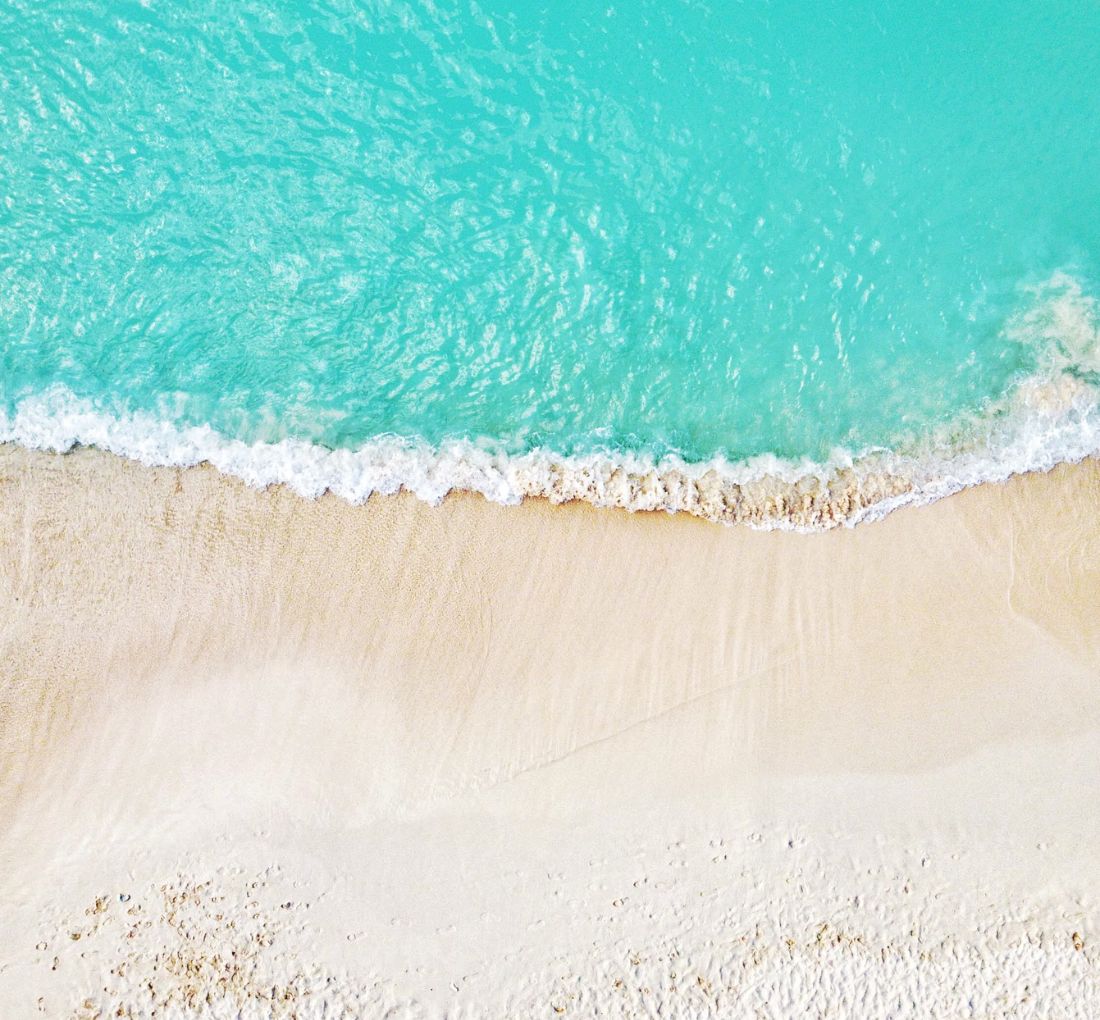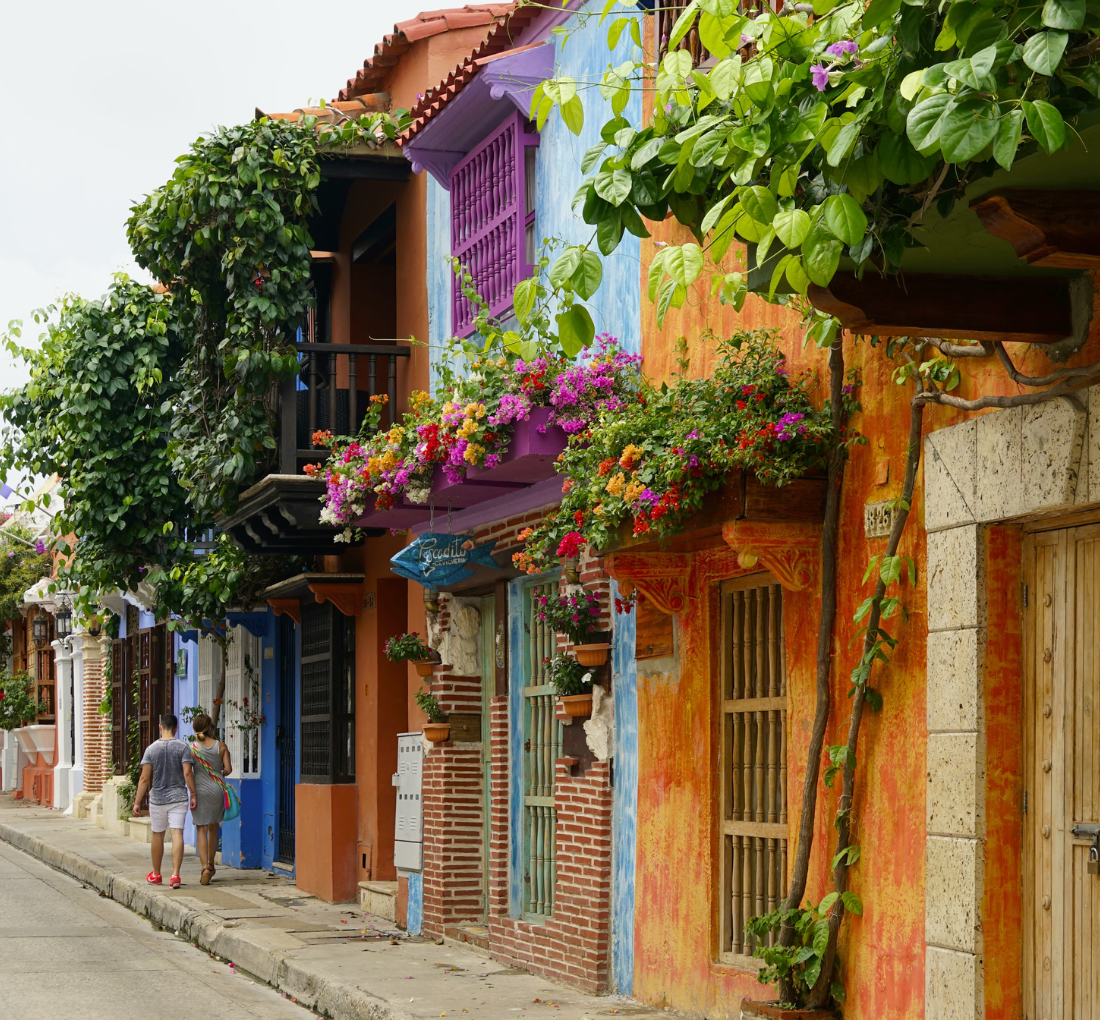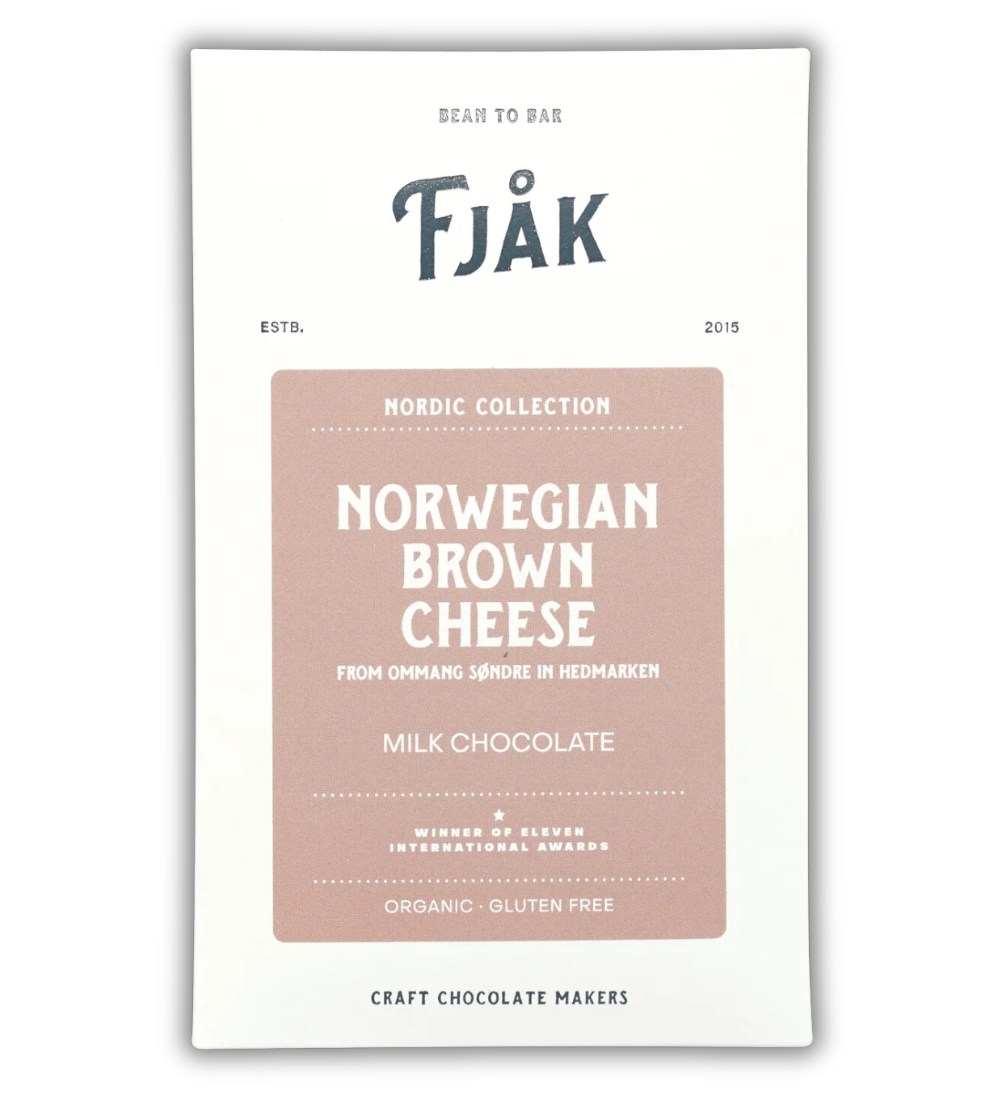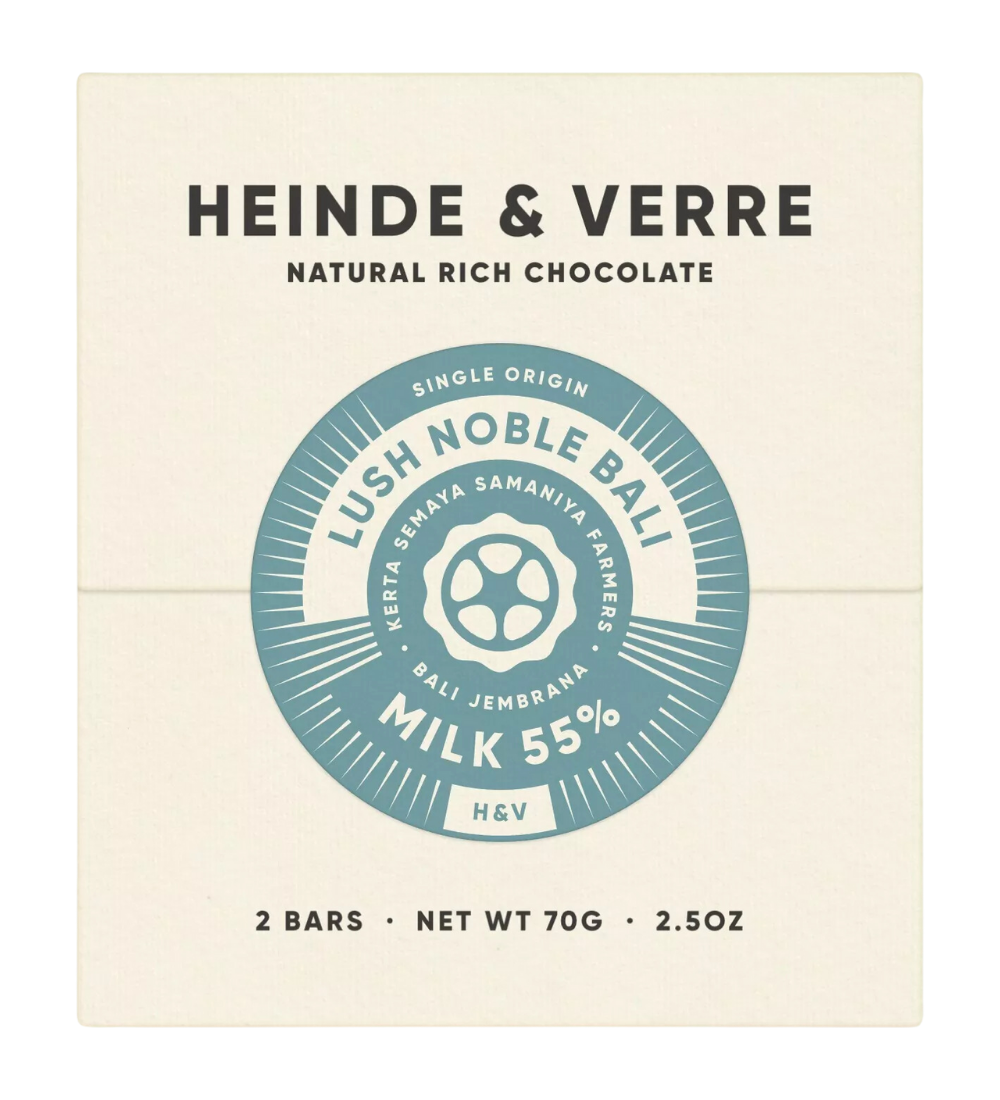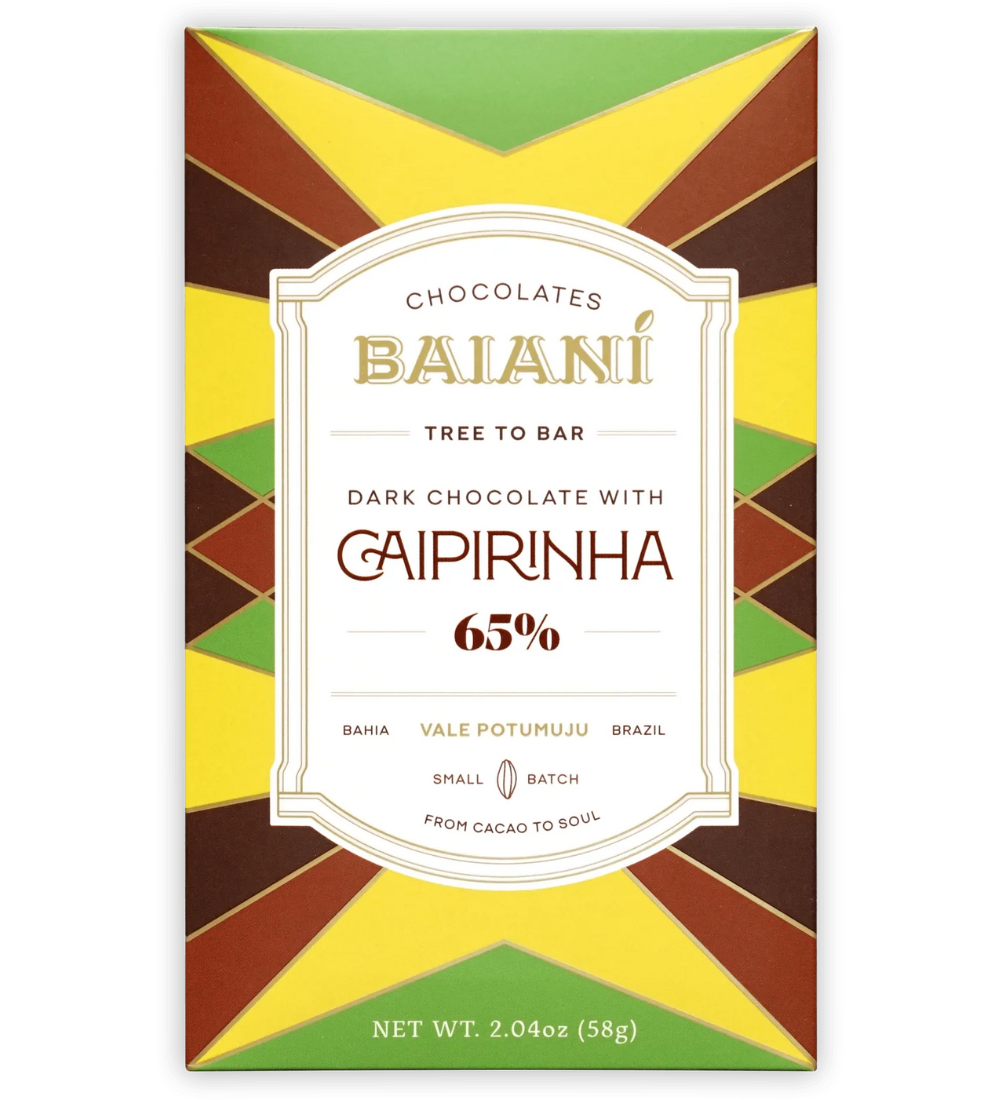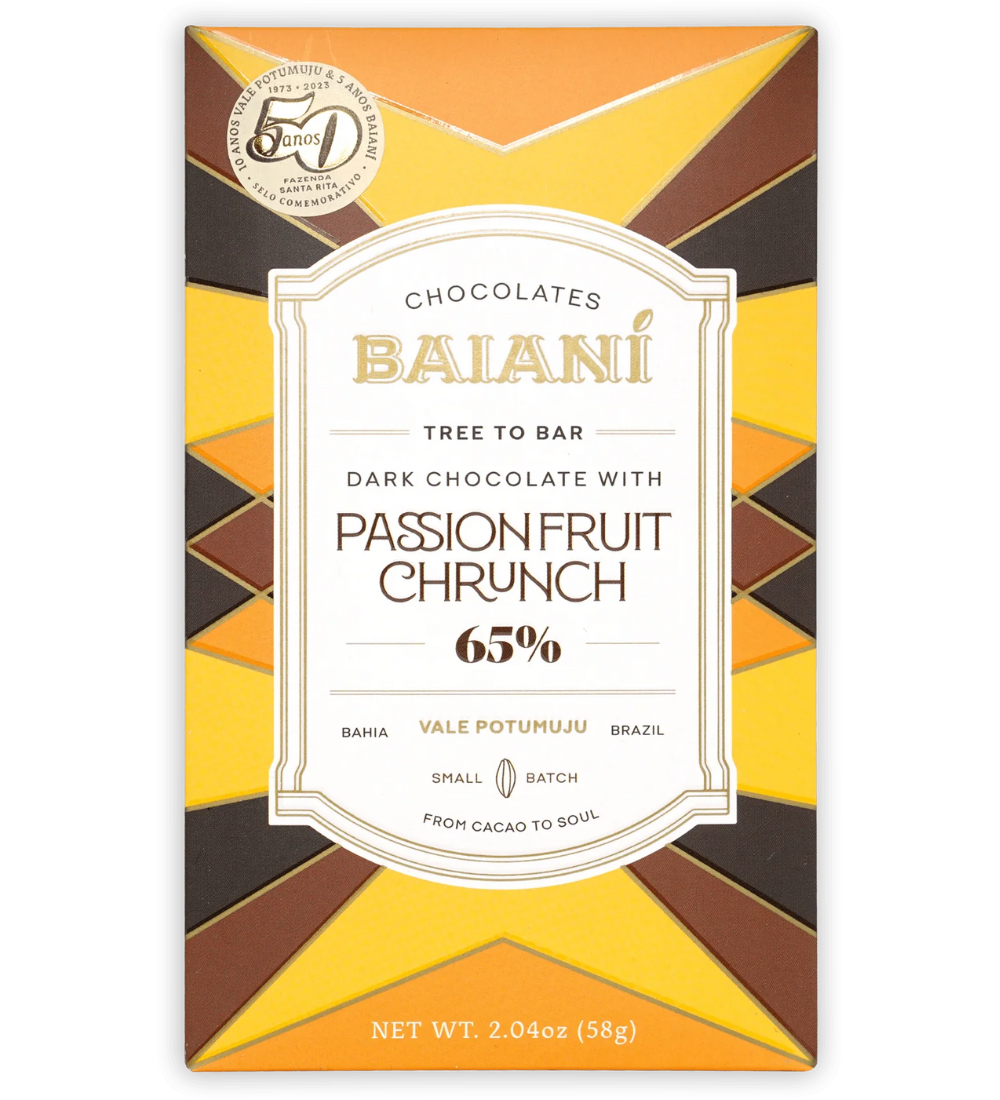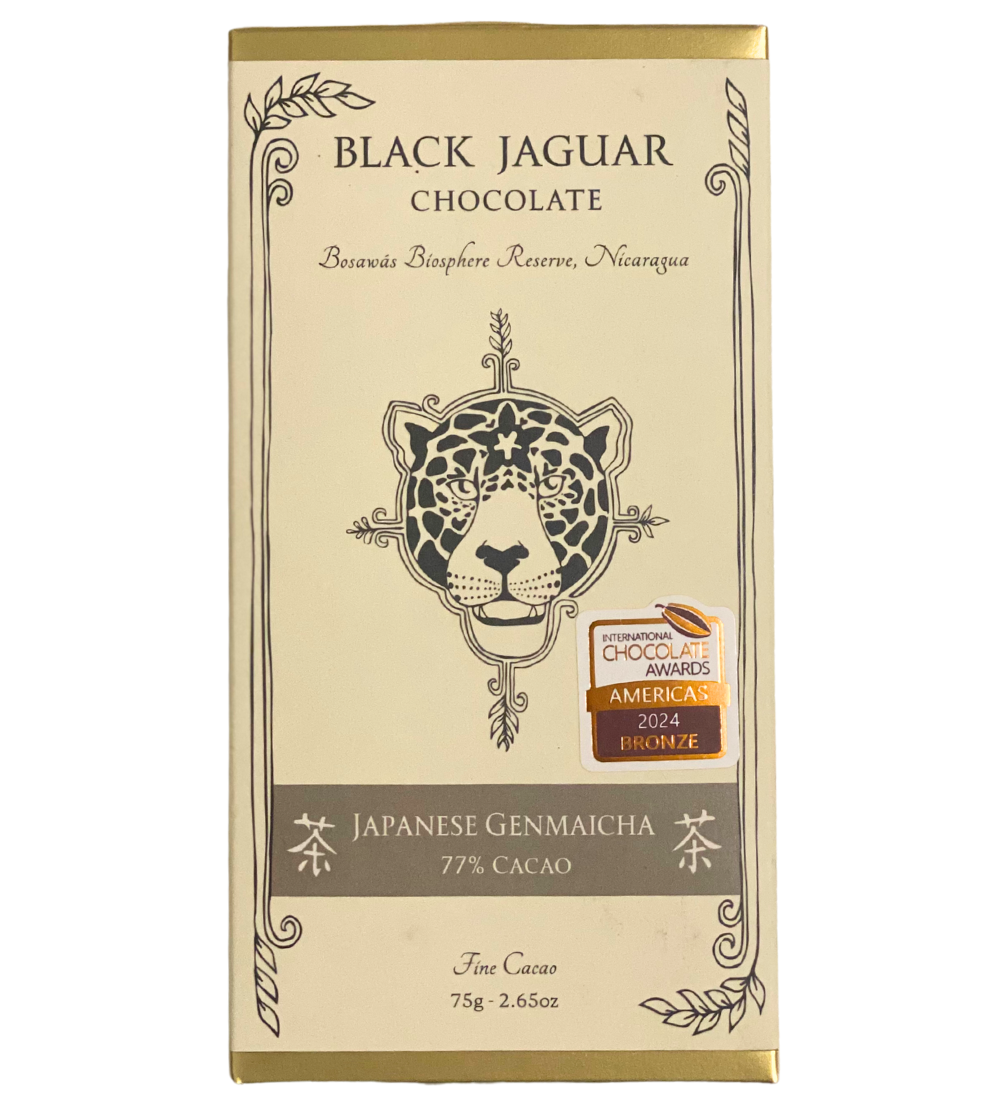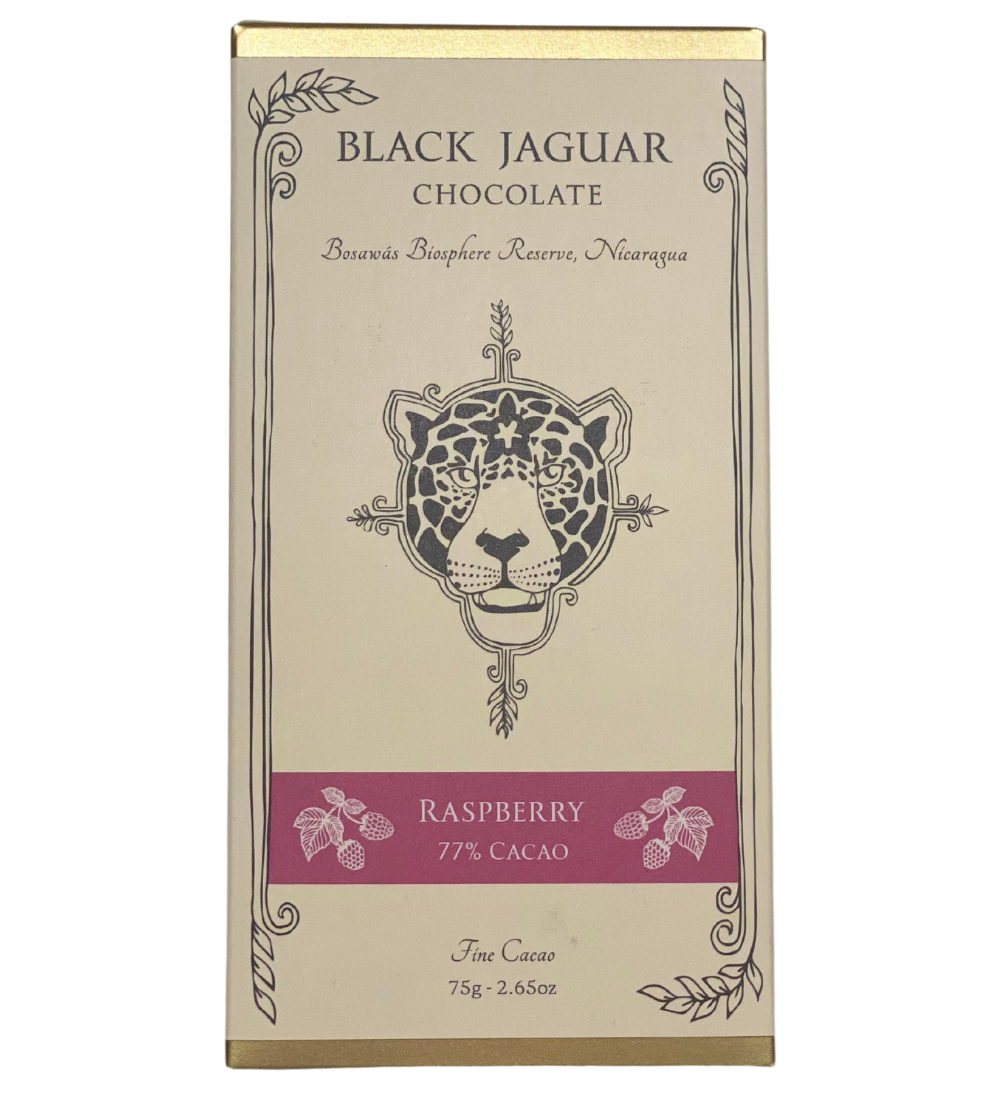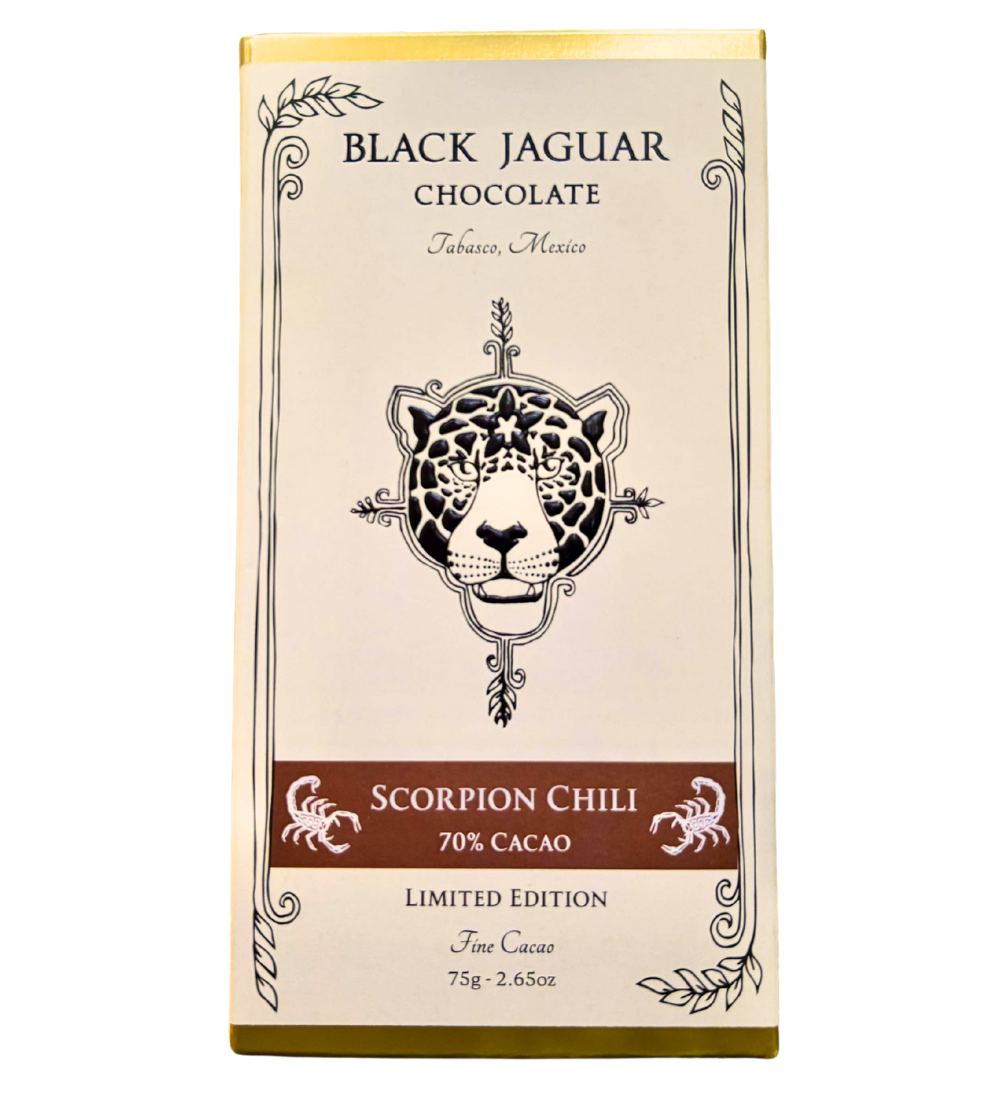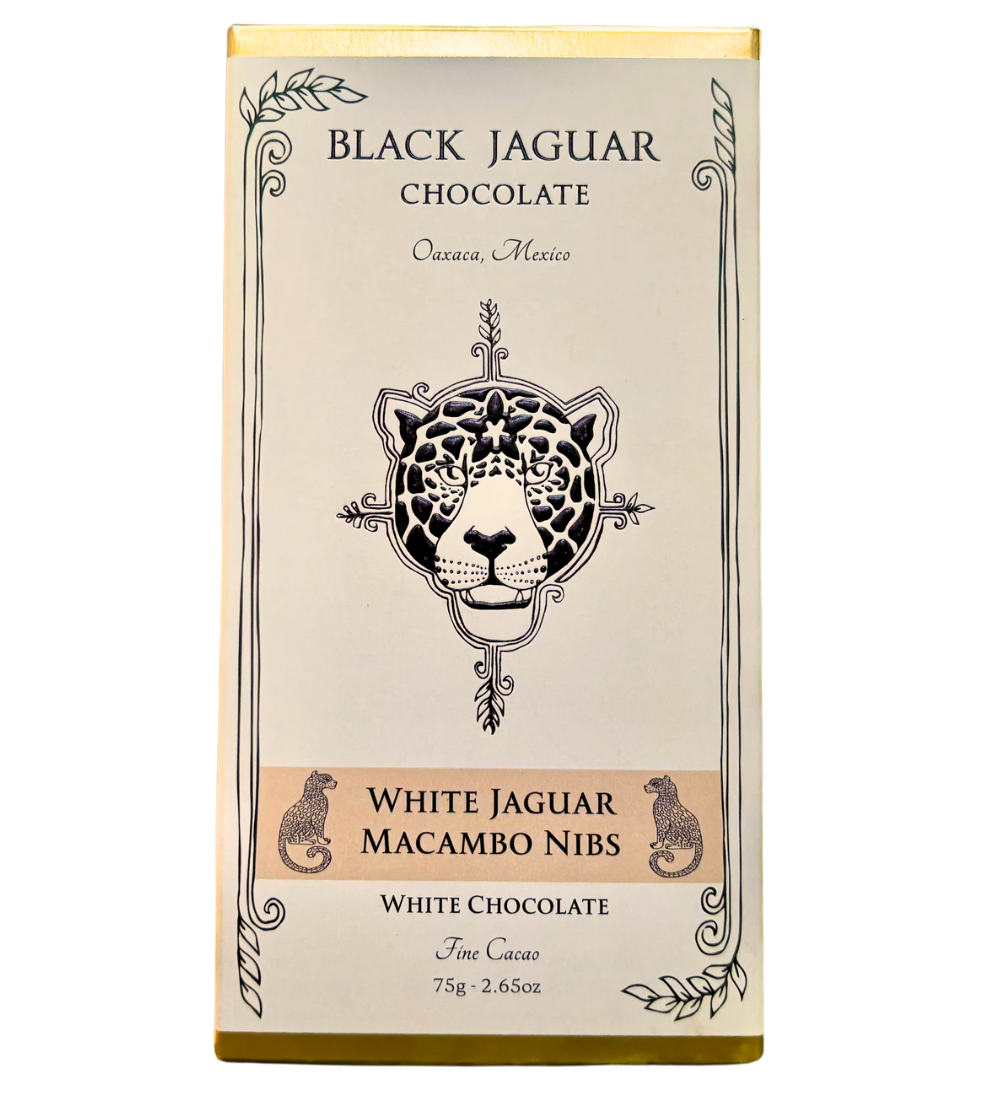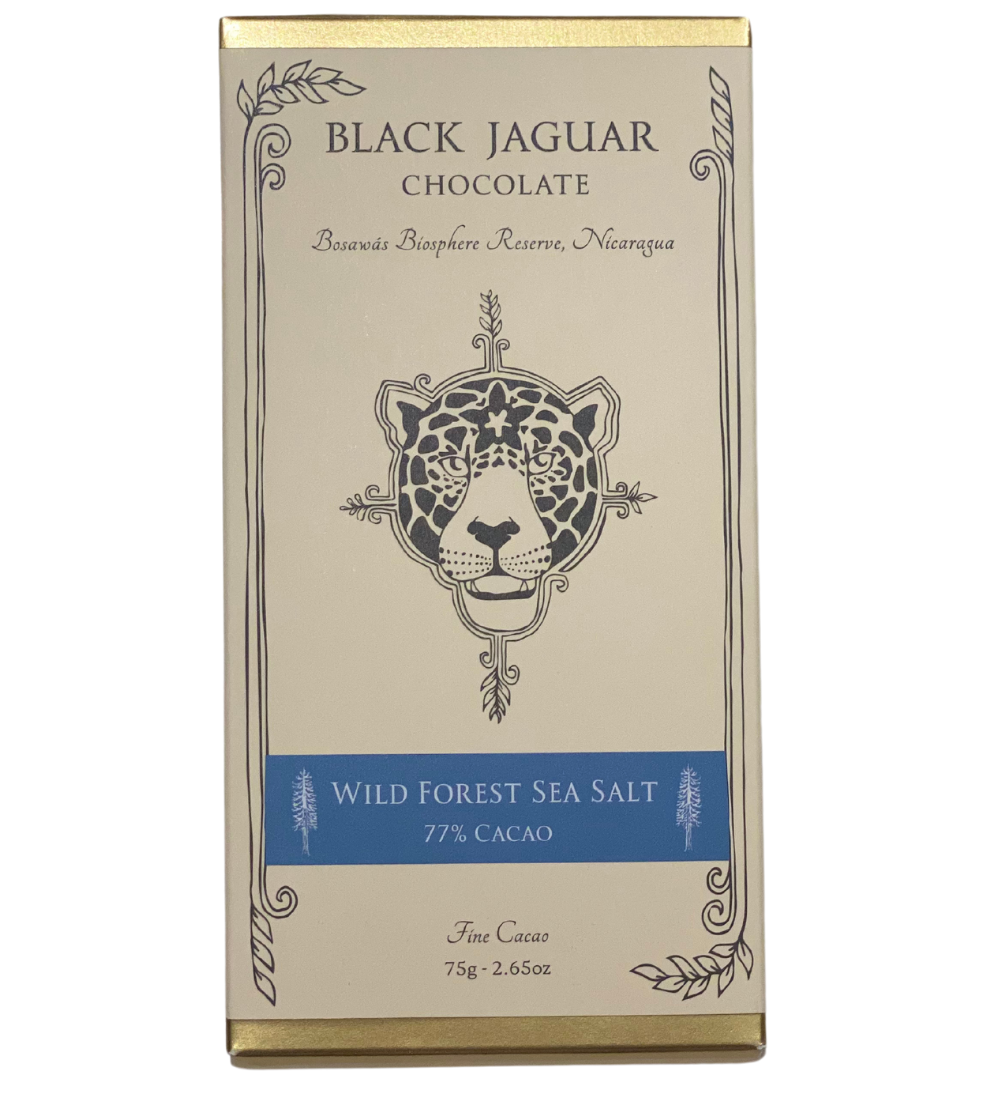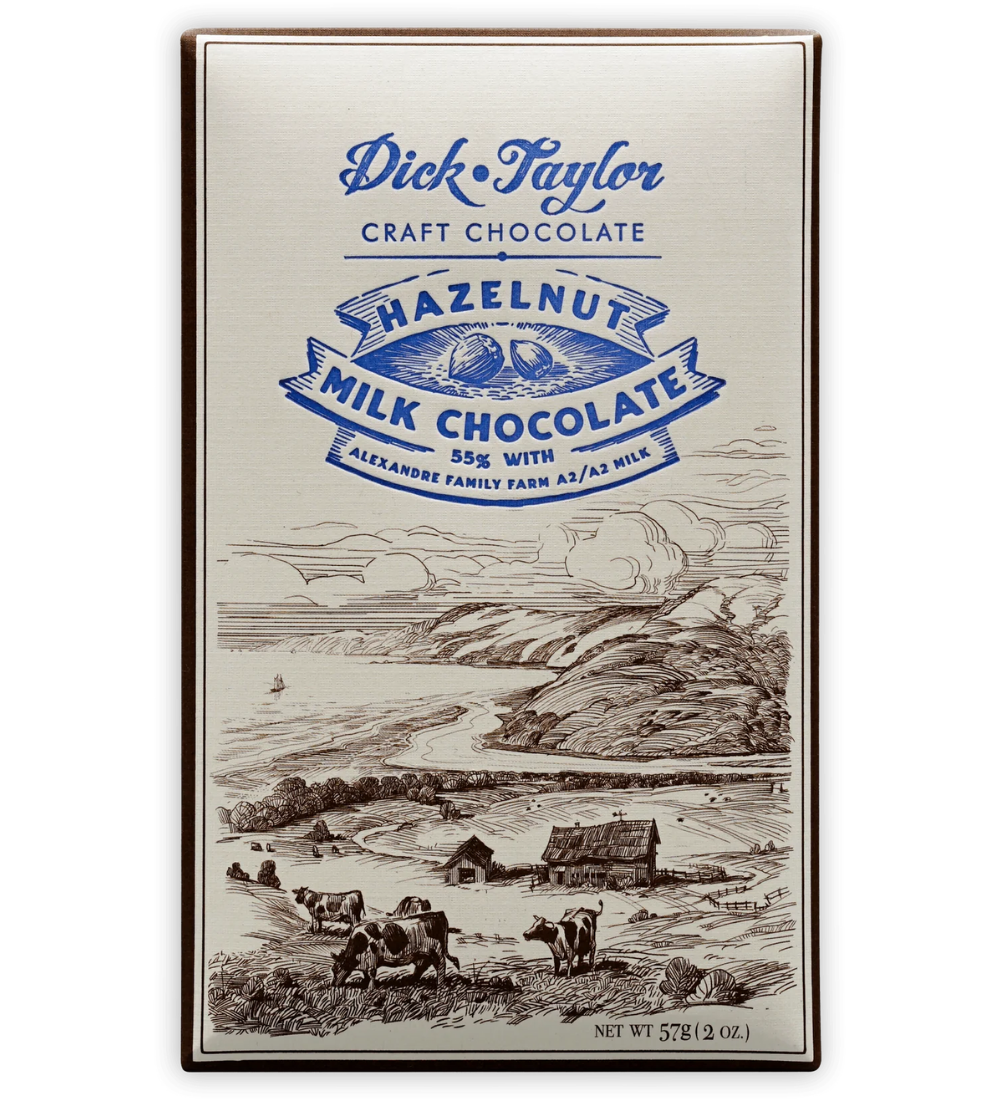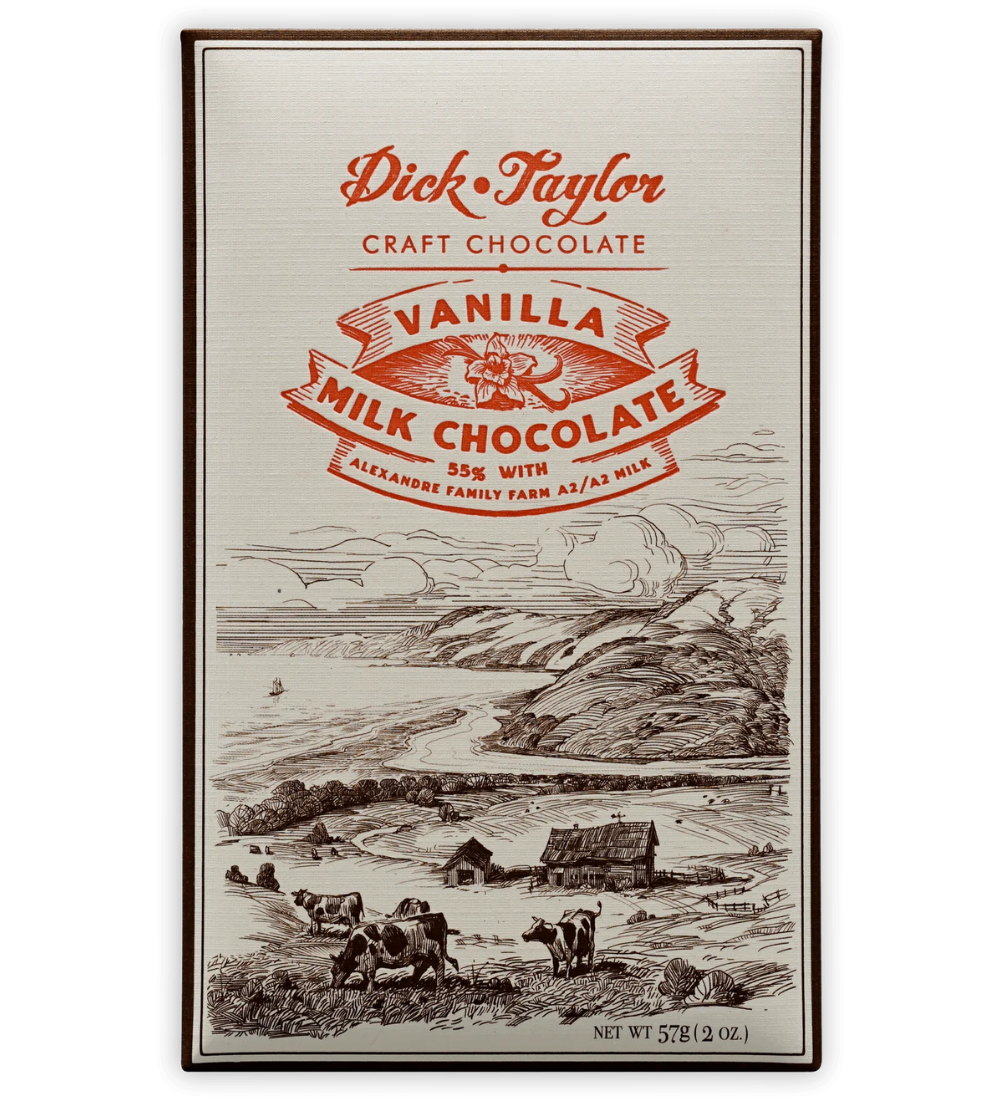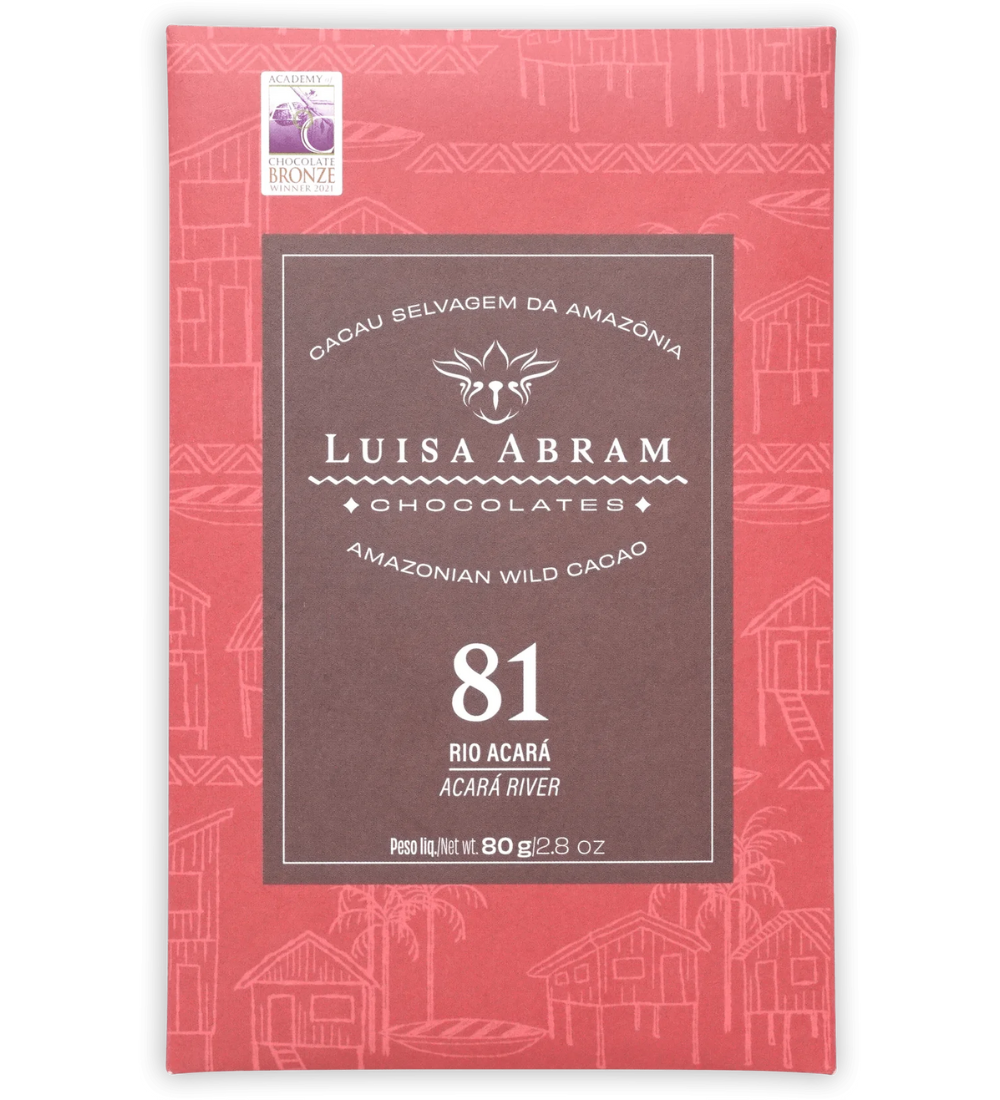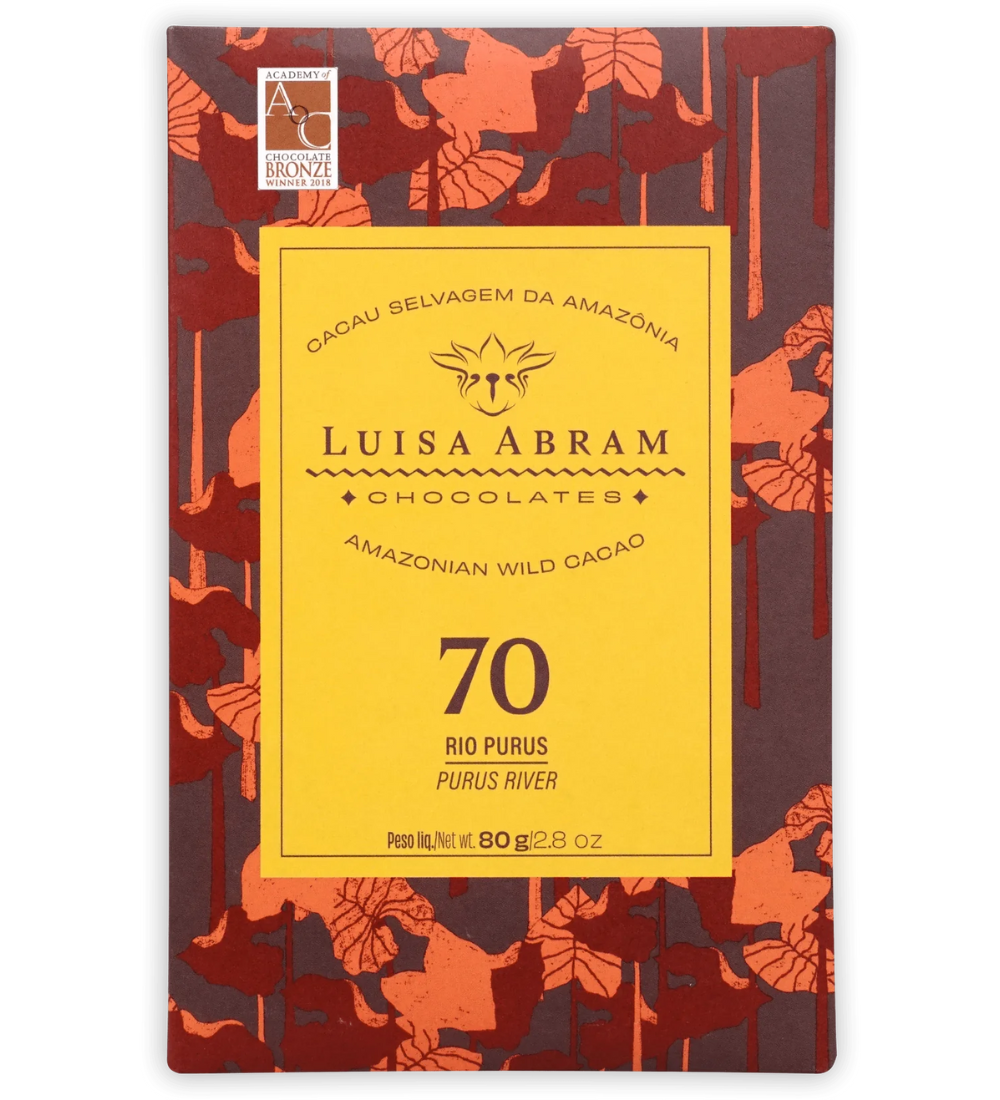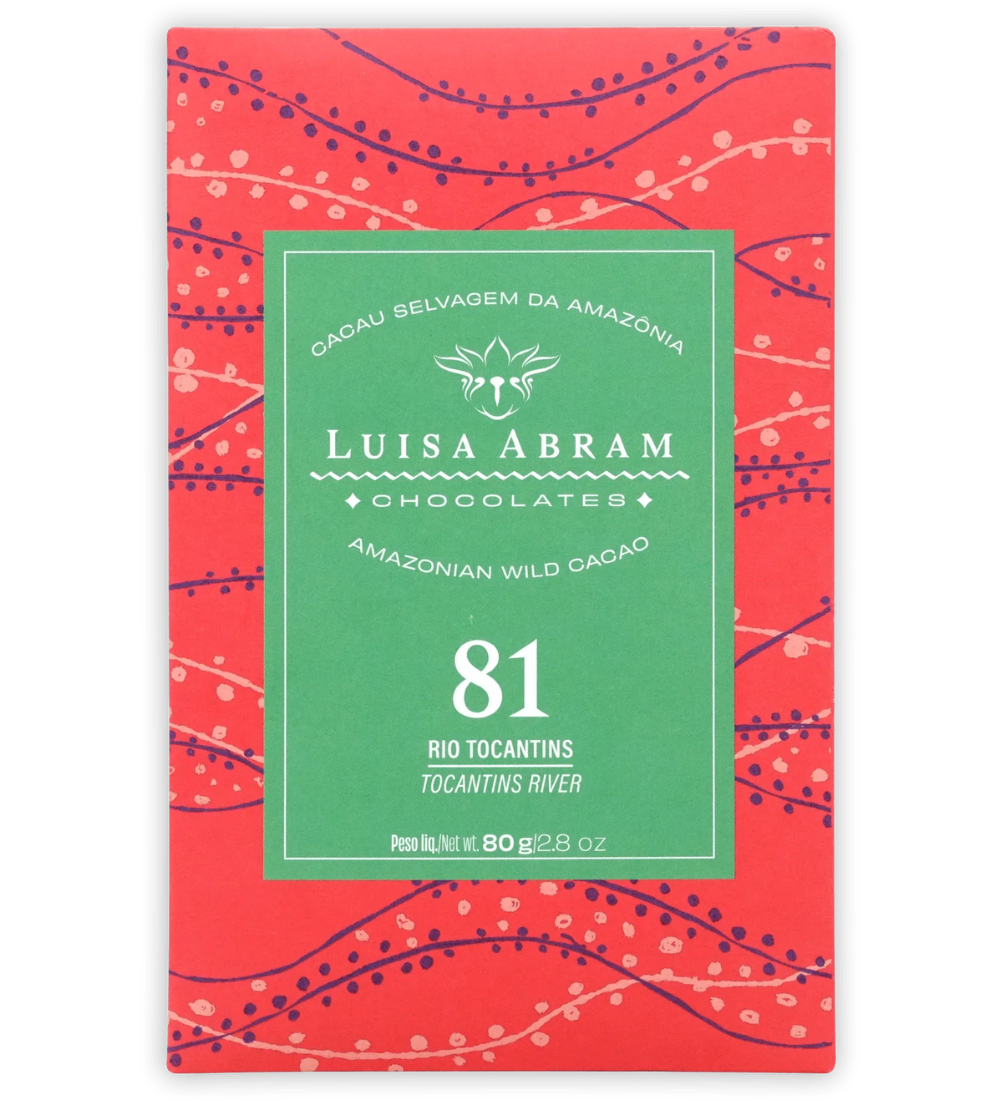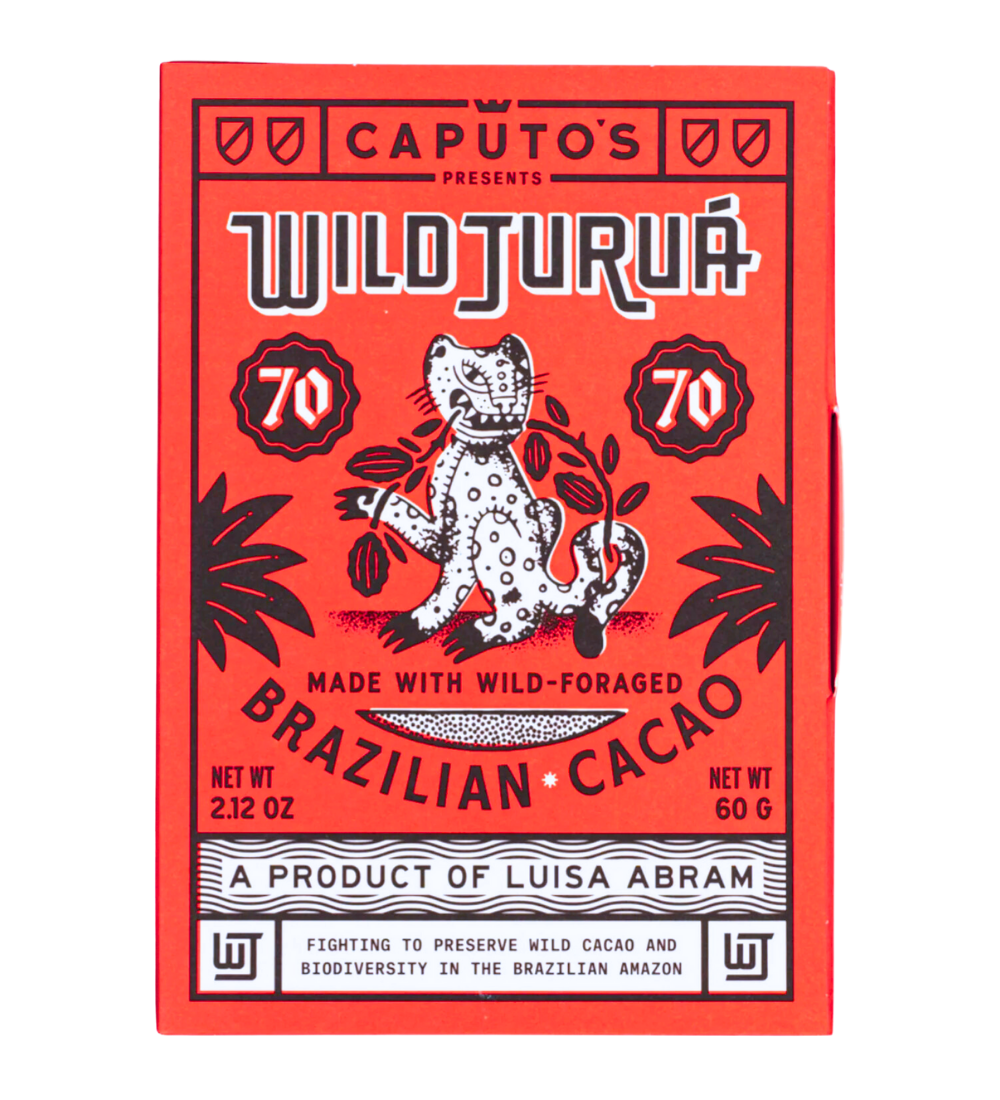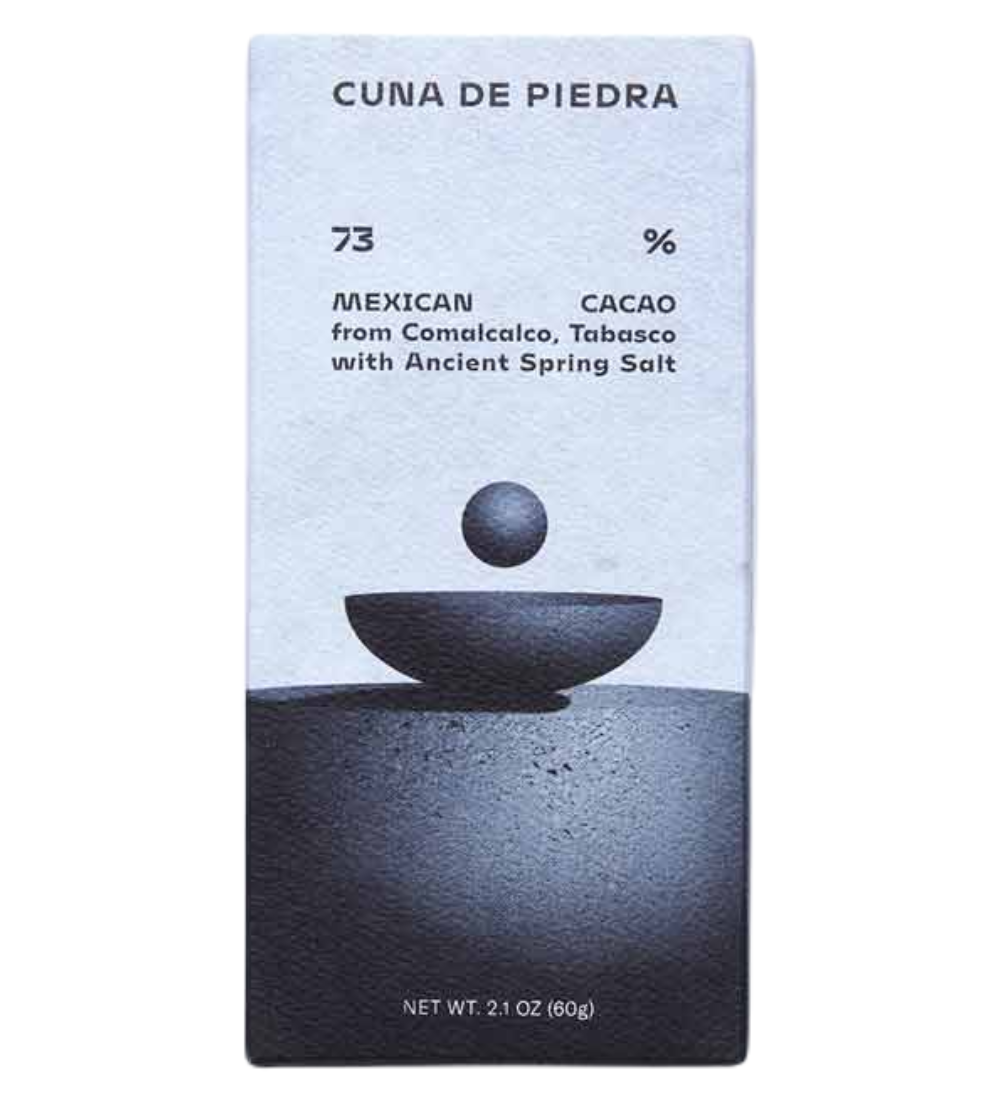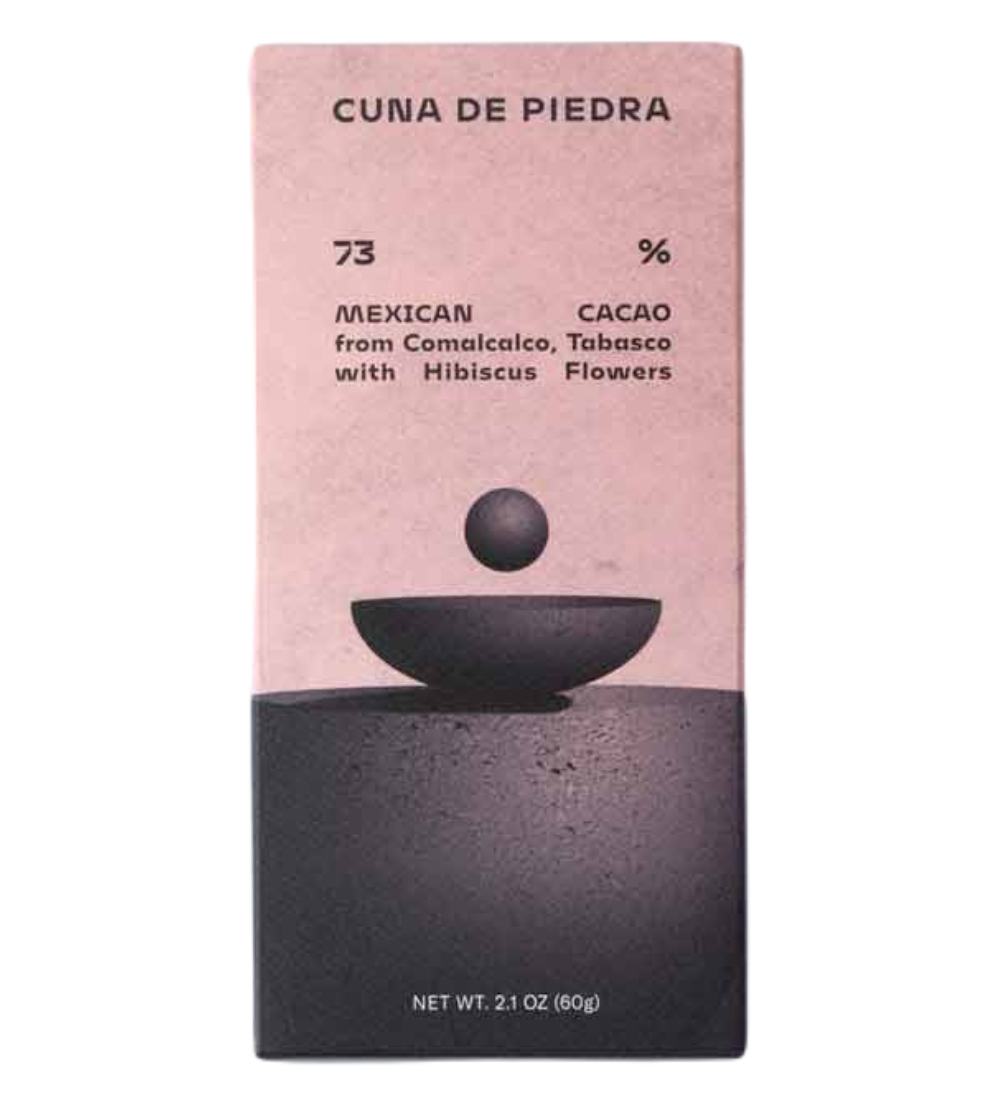Tucupi is a liquid extracted from wild manioc (aka cassava) in the Amazon, where it starts out as pure poison. That’s right— it has to be boiled for five days just to be edible! Once it’s tamed, however, it brings a flavour that’s bold, tangy, salty, sour, and uniquely Amazonian. Traditionally used for pato no tucupi ("duck in tucupi"), where shredded duck is simmered in this sauce and jambu flowers, here it is present in the form of freeze-dried crystals and served in a bar made from wild cocoa foraged from the Purus River. The first bite is an umami-filled kick that hits you like a jungle storm—intense, unpredictable, unforgettable—until the fudge, brownie, and nutty notes of the chocolate flow through.
Luisa Abram Dark Chocolate w/ Tucupi 70%
Cocoa Origin: Brazil
Producer Country: Brazil
Weight: 80 g
Adding product to your cart
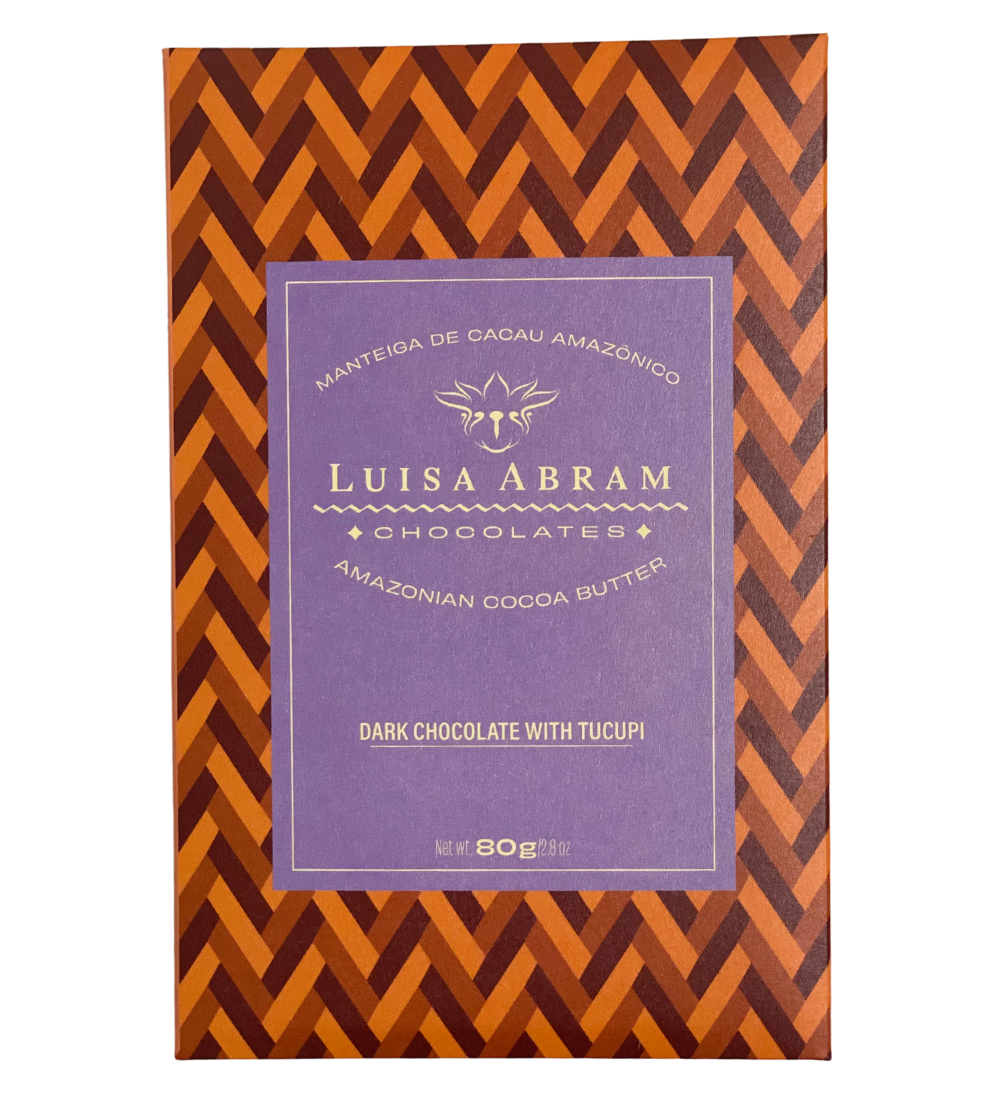
Luisa Abram Dark Chocolate w/ Tucupi 70%

Imagine trekking deep into the world’s largest rainforest, battling the heat and humidity and inherent dangers, with no modern technology or animal companions, in search of ancient cocoa trees. Pretty cool, huh? That's reason #1 why I love Luisa Abram's chocolate. The second reason? The incredible, unique flavours that come from these ultra-rare beans. Some of these beans haven’t been tasted for centuries, ever since they were first planted by Jesuit missionaries. It's like taking a taste of history. And it's not just about the chocolate; it's about respecting tradition, preserving biodiversity, and working closely indigenous communities. Plus, it's a family thing – Luisa, her parents and sister, and the over 850 families they partner with.
Shop More Luisa AbramTocantins is a state located in central Brazil, nestled within the Brazilian Highlands at elevations ranging from 100 to 400 meters above sea level. The region is geographically diverse, featuring woodland savanna on the highlands, dense semi-deciduous forests in the river valleys, and tropical rainforest along its northern edge. Tocantins boasts a subtropical climate, characterized by minimal variation in average monthly temperatures and an average annual temperature of 24°C. Annual rainfall averages about 1,500 mm, with the majority occurring between October and March. As Brazil’s newest state, Tocantins is a burgeoning frontier area with a population historically comprised of indigenous and mixed European-indigenous populations. The region’s primary economic driver is agriculture, particularly cattle ranching, along with the cultivation of rice, corn, and soybeans.
